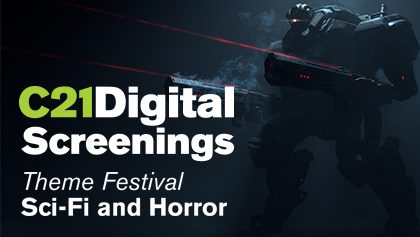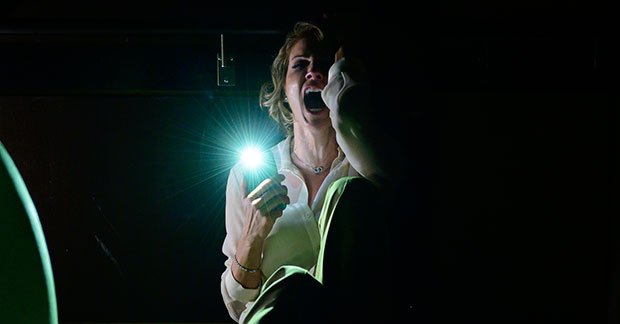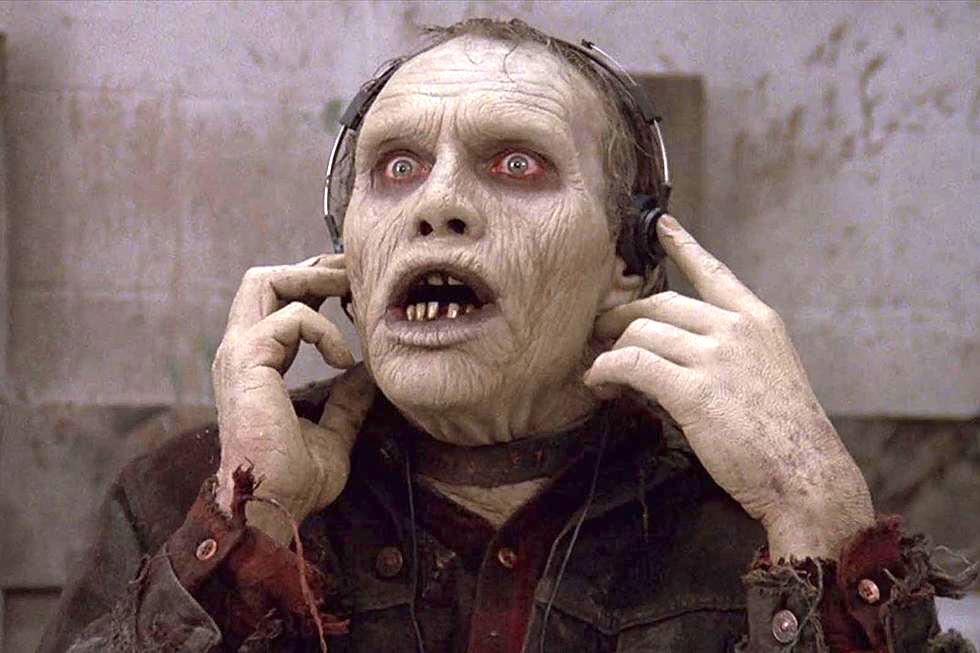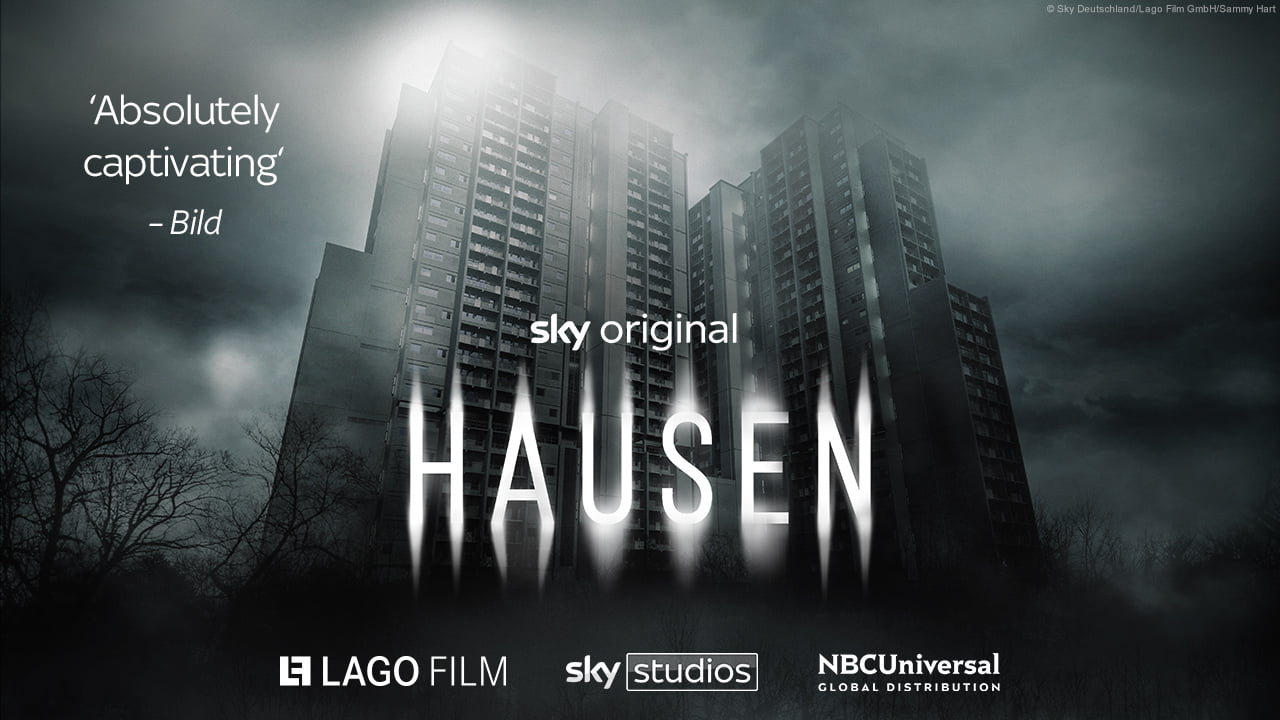Theme Festival - Sci-Fi and Horror

This year has been something of a horror story itself, but it seems real-life events of 2020 have driven audience demand for fictional horror and sci-fi on-screen. Karolina Kaminska investigates.
In the year 2020, plagued as it is by a Covid-19 crisis that at times resembles a horror movie, it might seem odd that audiences are so keen to watch the various pandemic and apocalypse-themed films and TV shows that have been made over the years.
Steven Soderbergh’s 2011 thriller Contagion, for example, reached the top 10 on iTunes in earlier this year, almost a decade after its initial release. And at the virtual version of Mipcom in October, two of the biggest new launches were German haunted house drama Hausen from Sky Deutschland, distributed by NBCUniversal Global Distribution, and Syfy series Day of the Dead, from LA-based Dynamic Television.
So what has coronavirus meant for the horror and sci-fi genres and what sort of appetite is there now, as we reach the end of a tough and disastrous year?
According to Nicole Zamanzadeh, insights analyst at US-based entertainment data and analysis firm Parrot Analytics, the demand for horror-themed content in the US, the UK and worldwide actually experienced a 50% dip in April 2020 compared with April 2019, but has since been revived to fully recover by October, just in time for Halloween.

Meanwhile, demand for sci-fi programming also dipped in March and April of this year but has now reached new peaks, more than doubling since April 2019. Zamanzadeh credits series like Disney+ drama The Mandalorian, The CW’s The 100 and CBS All Access drama Star Trek: Discovery for driving that demand.
When it comes to the availability of horror and sci-fi content on VoD platforms, Richard Cooper, senior analyst at Ampere Analysis in the UK, highlights that “there are no specific increases in sci-fi/fantasy or horror programming since the Covid-19 pandemic took hold, other than a pre-existing trend of marginal growth in these two genres.”
Cooper says he suspects what has happened is that the profile of sci-fi and horror has been raised as a result of the pandemic. Consumers are seeking out these types of shows, and as a result people are just more aware of them.
According to Cooper’s analysis, the number of sci-fi/ fantasy and horror titles available across 16 VoD platforms in the US actually declined by 5% in January this year, before rising by 5% in February as platforms like Amazon Prime Video and Netflix added new titles to their catalogues.
March saw a further 1% rise, but the total number fell in April and May before increasing by 8% in June, again falling by 3% in July and increasing by 5% in August, only to drop by 12% in September.
It seems demand for such content is rising despite the fluctuating availability of titles on streamers, at least in the US.

Five years ago, AMC Networks in the US launched horror and supernatural-themed streaming service Shudder, where subscribers can enjoy series such as horror anthologies Creepshow and Slasher. The platform’s general manager Craig Engler says demand for the genre “has never been stronger.”
“Over the last five years, horror has been growing in popularity. Part of that is because there has been a new wave of films and filmmakers; things like [horror/thriller movie] Get Out kicked everything up a notch in terms of horror. In general, horror is always a very popular genre but one change we’ve seen recently is there’s been more and more horror on TV,” Engler says.

“TV has never been the traditional medium for horror, but in the last five to 10 years we’ve seen more and more people exploring longer form horror on TV. Think of American Horror Story on FX, AMC’s The Walking Dead and The Haunting of Hill House on Netflix. Hulu, Amazon and Netflix have all upped their horror game.”
Since Covid-19 hit, this demand has only increased, Engler says, noting that Shudder passed one million paid subscribers during the pandemic.
“There is a very interesting phenomenon when people are experiencing something awful going on in the world, such as Covid, they often turn to horror. In a strange way, horror helps you get your anxieties out. You have this pretend, horrible situation and then it gets resolved. There’s resolution through horror and there are some really interesting academic papers on how horror helps people deal with trauma, especially as we see it around us,” he says.
Engler adds that when the US went into lockdown earlier this year, the number one request Shudder received was to add more pandemic-themed movies to the platform. However, he notes that this trend has since died down. A trend that appears to be continuing, nevertheless, is demand for factual shows about the horror genre.
“We have a show called Cursed Films, which explores the myths around legendary horror films like The Exorcist and The Omen, where the cast and crew were affected by real-life tragedies. We’ve seen a tremendous increase in people wanting to see content about the horror genre that is not just set within a fictional world,” he says.

In Europe, production and distribution giant Banijay both produces its own and distributes third-party horror and sci-fi shows, such as Channel 4/Netflix anthology series Black Mirror and BBC3’s supernatural comedy-drama Being Human. The company’s head of non-English-language scripted content, Lars Blomgren, says there is “always demand” for horror and sci-fi programming, noting that more than 25% of Banijay’s scripted commissions come from those categories.
The multiplication of streaming services around the world has boosted this, according to the exec, who says both horror and sci-fi seem to “work really well” for the streamers, which find it “easier to tell edgier stories.” Blomgren adds that both genres do well, especially in the time of Covid, as they take viewers into a different world that may be even worse than the reality they are living.
“It’s always nice to meet people that have it even worse than you. You want to be taken out of your own reality into something that really puts a ‘hook’ in you and a story that’s somehow relevant but still takes you away from a tough reality,” he says.
Explaining the eight-part Hausen commission, Sky Deutschland’s director of scripted production Frank Jastfelder says: “Why not go into genre and why not dare to do something that is not very common in Germany? We have a certain horror tradition, but it is nearly 100 years old. The genre has been a bit neglected over the last decade, so we read the script and thought it was really worth developing.”

Back in the US, prodco and distributor Dynamic Television also has a big presence in the horror and sci-fi space, with titles like Syfy’s Day of the Dead, fantasy horror series Van Helsing and post-apocalyptic series Z Nation. It also distributes Shudder’s Creepshow.
Dan March, Dynamic’s founder and managing partner, says demand for sci-fi programming tends to fall into three buckets: premium pay TV channels and SVoDs that will undertake high-budget storytelling; basic cablenets with niche audiences; and more recently local SVoDs that are trying to compete with the bigger players.
“Appetite for the genre from the premium pay, big global players is not pulling back at all. It’s actually continuing to increase,” March says. “A lot of that programming is meant to attract audiences that are active but underserved in certain territories because they’re not getting that content from the big free-to-air terrestrial channels.”
The exec adds that as the TV landscape shifts from linear to digital on-demand, Dynamic has lost some business from partners that have failed to survive the transition. This has been offset, however, by new business from local players and terrestrial channels building their digital presence.
“We had partners in Italy, Australia and Asia that used to be buyers of our sci-fi programming that don’t exist anymore – channels that just haven’t been able to survive. But we are finding new homes for that content by looking to more localised SVoD players or digital platforms that are gradually making inroads on a territory-by-territory basis,” March says.
“We’re seeing a lot of opportunity there and a lot of interest in our sci-fi and horror content. We’re also noticing that in some territories the terrestrial channels are investing more in their digital players and are broadening the type of content they want to acquire. Three years ago, they would never have considered buying a sci-fi or horror show for their free terrestrial channels, but all of a sudden they are.”
According to March, therefore, increased demand for horror and sci-fi programming is largely driven by the expansion of digital viewing and appetite for streaming, rather than the coronavirus pandemic.
Whether or not viewers have been more inclined to watch horror and sci-fi as a result of Covid, some networks and production companies have predicted that demand for these types of ‘darker’ shows may be beginning to dwindle in favour of lighter, more uplifting content as audiences seek to escape from the real-life horror around them.
Banijay’s Blomgren argues, however, that “escapist” content can be both light and dark in tone. “All forms of escapism are really in demand now,” he says. “There’s dark escapism and there’s light escapism and it doesn’t really matter because both take you out of your day-to-day life. There’s certainly still demand to experience dark stories in a safe place.
“Horror lives its own life. It’s special because it travels regardless. There are no language boundaries so it always travels and that will continue.”

As Marco Mehlitz, producer at Hausen prodco Lago Film, said at the show’s recent premiere at Content London: “Genre actually tends to work on an international level because everybody can identify with that, as opposed to comedy, which has a lot of cultural identity and doesn’t tend to travel. The feeling itself translates [between audiences], while the setting is unique. You get a glimpse into a different society, but you’re confronted with feelings and emotions that should be familiar to everybody.”
Dynamic’s March agrees, adding that horror has a loyal audience who will always want to watch content within the genre. “The thing about the horror audience specifically is that it is incredibly loyal. Horror fans will stick with that content and follow it in good times and bad times.
“But you can still have some levity in that genre. You don’t have to take life too seriously; you don’t have to necessarily go all the way to dark,” he says, adding that the same can be said for sci-fi.
“The sci-fi audience is also a very loyal audience. During Covid, we talk about how people want escapism but don’t want it in a dark and apocalyptic way but rather with more light and levity, and sci-fi can cater to that category as well.”
Shudder’s Engler, meanwhile, also sees a positive road ahead for horror and darker-themed content in a post-Covid world. “Consumers and viewers want all kinds of things that are good, new and interesting. There’s never been a better time to be a horror creator than now because people are really able to explore the genre in ways it hasn’t been explored before,” he says. “The future for horror is bright. There’s not going to be any slowdown in the appetite for it and I think we’re going to see it grow.”